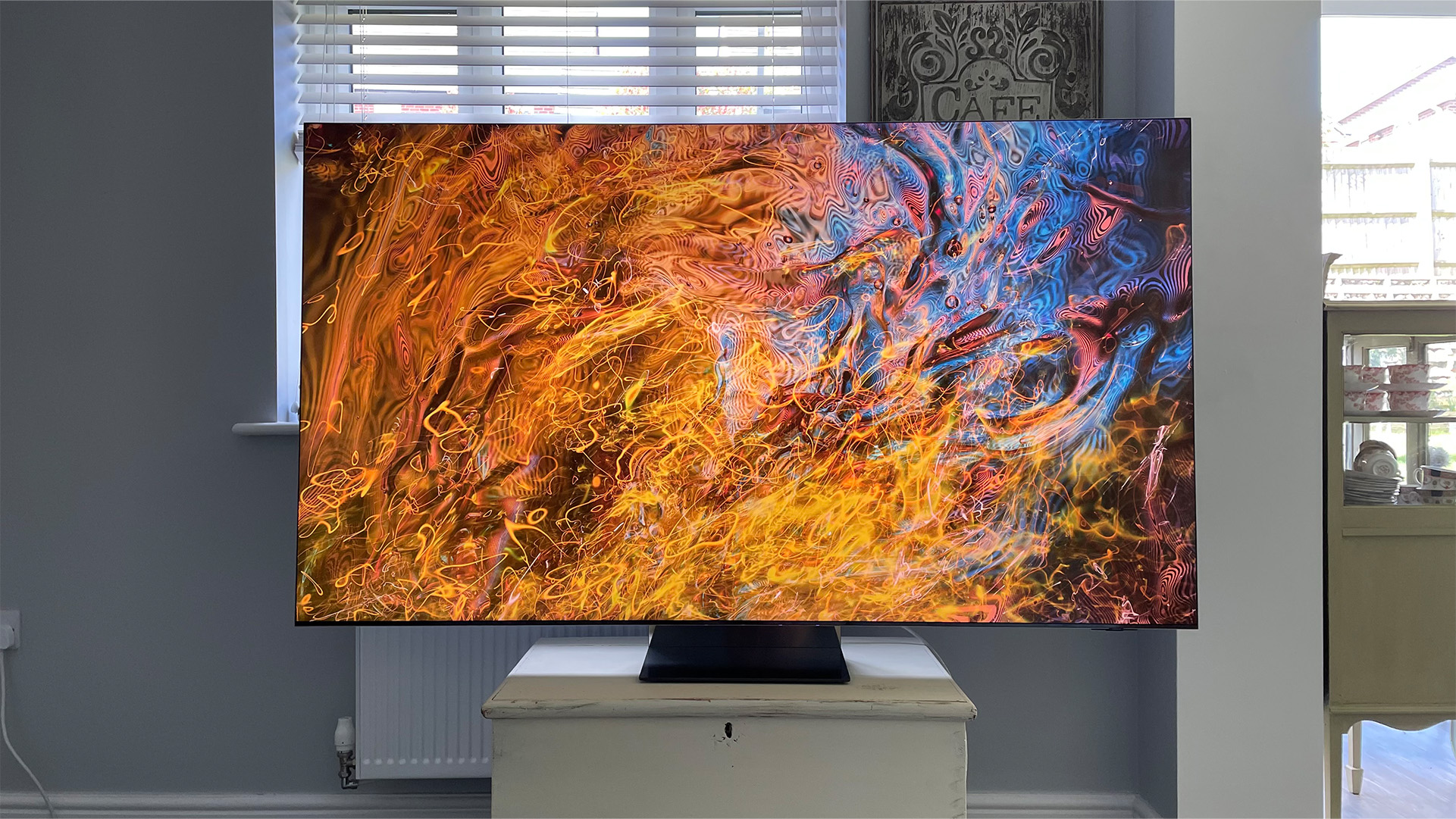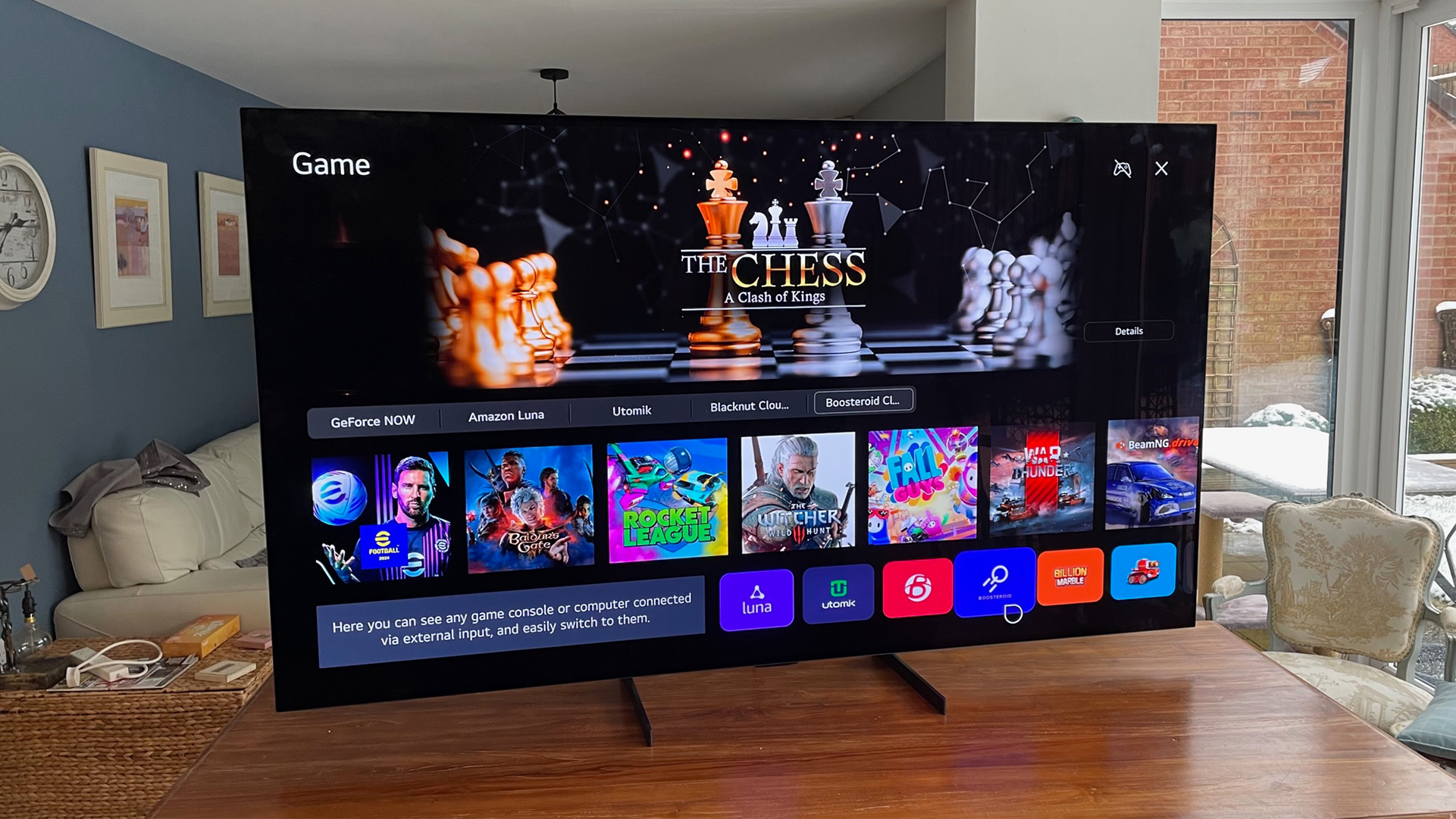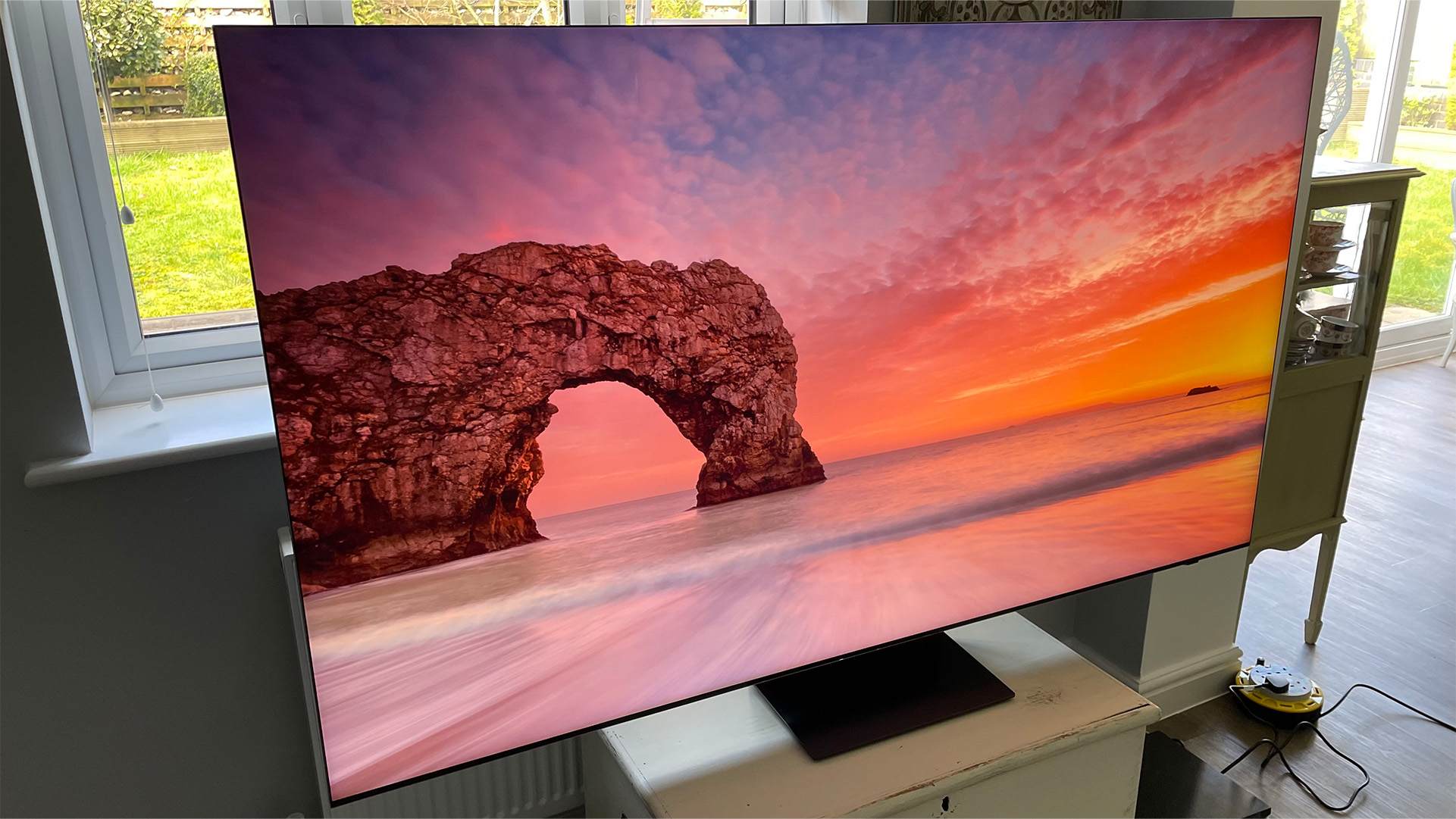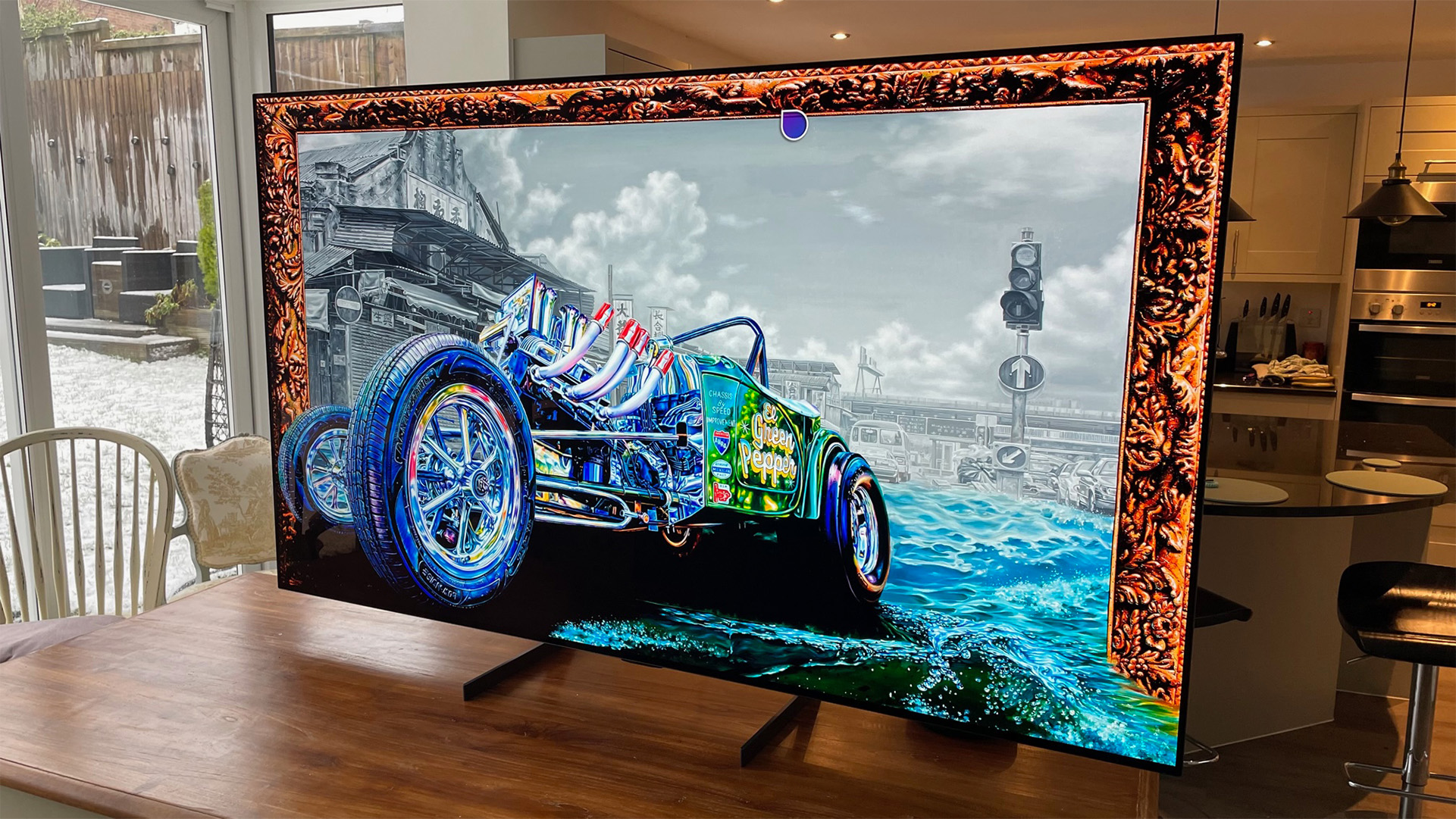Samsung QN900D vs LG Z3: which 8K TV is the most stunning?
Next-gen TV face-off


Screen size: 77in (also available in 88in)
Type: OLED (with MLA)
HDR: HLG, HDR10, Dolby Vision
HDMI inputs: x4 (all HDMI 2.1)
The Z3 is massive, and looks fantastic with both 8K and lesser sources alike. But it's crazily expensive, not as bright as an LG model costing a third as much, and doesn't quite deliver the next-gen picture quality of the QN900D. It can't place sounds with the same degree of accuracy either.
Pros
- Gorgeous, incredibly detailed picture
- Strong upscaling performance
- Luxurious design
Cons
- It’s painfully expensive
- It’s not as bright as expected
- Slightly inhibited audio performance

Screen size: 75in (also available in 65in, 85in)
Type: QLED
HDR: HLG, HDR10, HDR10+
HDMI inputs: x 4 (all HDMI 2.1)
The QN900D is the sleeker-looking of the two TVs, and is under half the price of the Z3. Its picture quality is as futuristic as the set's physical design, it sounds that bit better (though still not fantastic) and it's brighter. The stand is a lot cooler, too. Even if 8K never takes off, this is still a worthwhile investment for those with the funds.
Pros
- Groundbreaking 8K upscaling
- Exceptionally bright and colourful
- Stunning futuristic design
Cons
- Average sound quality
- No real 8K content
- Backlight-dimming distractions in some presets
With four times as many pixels as 4K, 8K really is a sight to behold. But considering even 4K isn't yet a broadcast standard, is an 8K TV really necessary?
No, not at all. But neither is HDR, Dolby Atmos soundbars, wireless audio, or about any other mod con you care to mention. Just because you don't need it, doesn't mean it's not worth having.
While 8K content is still quite sparse, an 8K TV still works with lesser resolutions like 4K and HD. In fact, it'll upscale said content to make it look its best. And when 8K finally arrives, your TV will be ready to handle it.
LG and Samsung have been making 8K TVs for a few years now. At a little shy of £7000, Samsung's 75-inch QN900D is a fair bit cheaper than LG's £15,000 77-inch Z3, but it's still no one's idea of cheap. Is it better value though? And which TV should early adopters favour?
Samsung QN900D vs LG Z3: price
Both of these TVs are huge and 8K resolution, so they certainly cost a pretty penny. LG's Z3 takes the biscuit – the 77-inch model is a staggering £15,000 / AU$15,999 (it's not on sale in the US), while the 75-inch QN900D is "only" £6650 / $6299 / AU$8999.
** Winner: Samsung QE75QN900D **
Samsung QN900D vs LG Z3: design

The Z3's design has us split. On the one hand, we love the minimalist frame, the multi-layered effect on the rear panel and the overall build quality, including the recessed mounting point for hanging it flush to the wall. But the reflective finish on the rear panel looks a bit cheap (as do the feet that come with it), the package is surprisingly deep for an OLED, and the set is a beast to manoeuvre into position. Hardly surprising for a TV this size, you might think, but when it costs £15K, any slip-ups could be costly.
The latest hi-fi, home cinema and tech news, reviews, buying advice and deals, direct to your inbox.
The QN900D is sleeker and looks more futuristic. It's the apotheosis of Samsung's Infinity Air concept, so the frame is so narrow it's practically nonexistent. It's slim (just over 1cm deep), which is pretty amazing considering it's an LCD TV, complete with backlighting. It can be so slim because it outsources its connections, power handling and processing to an external ‘One Connect’ box that connects to the TV with a single cable (just like with Samsung's S95D).
It all looks suitably premium, from the metallic side trim with perforations to the mirrored stand that makes it look like the TV is floating in mid-air. Swish.
** Winner: Samsung QN900D **
Samsung QN900D vs LG Z3: features

Both models support 8K pictures of course, but they can do plenty else besides.
Samsung's QN900D is between 20 and 30 per cent brighter than its predecessor while also meeting modern TV energy consumption rules. It uses Mini LEDs for more precise local dimming, which is controlled by the new Neo Quantum 8K AI Gen 3 processor. This is a big improvement on last year's model, with double the NPU speed and 512 neural networks (eight times as many as last year) to analyse images and optimise picture quality.
This processor also enables the 8K upscaler, which boosts 4K and even HD sources into 8K – which you're going to need, given the shortage of native 8K content.
A new motion prediction system prevents glitching from small, fast-moving objects, and you can convert SDR to HDR. The Real Depth Enhancer Pro system tweaks the image to create more depth, and there's plenty for gamers: four HDMI 2.1 ports equipped for 4K/120Hz (and 144Hz for PC gamers), VRR (including AMD Freesync Premium Pro) and ALLM, as well as 8K games at up to 60Hz. HDR10+ gaming is also supported, and the Game Bar menu gets you straight to the gaming-specific adjustments.
The OS is Samsung's Tizen, which has been improved with quick links to your downloaded apps and a new For You tab that lets you continue watching where you left off. Users profiles, voice controls via Alexa and Samsung's Bixby assistant, plus a 90W sound system round it off.
The Z3 uses LG's Brightness Booster Max tech, as seen in the G4 and 2023's G3. That encompasses LG's 8K-optimised Alpha 9 Gen 6 video processor and Micro Lens Array technology (which uses tiny lenses to amplify the light produced by OLED pixels).
That processor helps to upscale lesser content to 8K, while also employing AI to improve both picture and sound quality. Its 60W sound system is a little less powerful than the QN900D's, but uses psycho-acoustic processing to create a virtual 9.1.2-channel soundscape from its 4.2 channels (though this mostly only works with broadcast content due to copyright issues).
There's no HDR10+ support, but otherwise all HDR formats are catered for (HDR10, HLG and Dolby Vision), while Dolby Vision gaming supports 4K/120Hz game sources. Gamers also get VRR up to 120Hz in both the Nvidia G-Sync and AMD Freesync VRR systems as well as its ‘standard’ guise, and all four HDMI ports are the HDMI 2.1 standard. Game Dashboard lets you make gaming tweaks in a jiffy.
LG's webOS operating system supports profiles just like Samsung's, and also has recommendations. Generally, we find it a bit easier to navigate than Tizen.
** Winner: LG Z3 **
Samsung QN900D vs LG Z3: picture

Now the meat of the matter. Both TVs support 8K, but which looks better?
It's worth saying that both look pretty stunning. 8K on the Z3 is a joy to behold, and not just from close up either – from a normal viewing distance, you can see it's a definite upgrade on 4K. There's more depth, edges are less harsh, details clearer and the whole picture feels more immediate and real.
But you don't need 8K to get the benefit of the Z3's abilities (and good thing too, seeing as it's so hard to come by). Upscaled 4K content looks better than standard 4K, with more densely-packed detail and richer textures. There's not a hint of softness, lag, artefacting or muted colours, all of which are common to upscaling engines.
Even stepping down to HD produces spectacular results. A good Blu-ray produces clean, natural images – mighty impressive, given the number of pixels the TV has to create for every image frame in real-time. Lower-rent HD sources like YouTube videos and compressed digital broadcasts prove less impressive, but that's expected. And the Z3 still manages to smooth over noise without losing much detail.
Standard definition images look softer and more processed than on most 4K TVs. But then stretching out such a low-quality source over such a large canvas is a fruitless task to begin with.
Overall, it's a wonderful performer, thanks largely to its pixel-level lighting control which makes the extra resolution feel stunningly organic. There is a hint of judder with 24p sources, which is more noticeable as it jars against the beauty of the 8K images. But what's more surprising is that it's not as bright as LG's 4K TVs that also use MLA and Brightness Booster Max tech, and that cost a third as much. Which is a bit of a bummer when you're spending £15K on a TV.
The QN900D is one of the best upscaling TVs we've ever seen. Textures like hair and grass look sharper, denser and more three-dimensional, with nary a hint of processing or artificiality. It's a genuinely next-gen experience the likes of which you won't get on any other TV.
The extra resolution breathes new life into old games too. Again, it's handled without adding any noise or elements that look artificial.
And if you are fortunate enough to watch any native 8K content on it, you're in for a treat. Our test reel looks amazingly lifelike – it's more like looking through a window than watching a TV.
Contrast is nothing short of remarkable for an LCD TV – it creates almost OLED-like black colours along with OLED-beating brightness at the other end of the spectrum. The fact that it can also control its light down to impressively localised levels for an LCD TV helps to inject even more definition into the minutiae that makes 8K special.
Thanks to its Quantum Dots, its colours can go incredibly bright without losing saturation, but it always maintains its subtle shading abilities.
Downsides? The backlight on the Standard setting can be a little inconsistent, and the 8K upscaler can be a little too aggressive at times. But selecting the Movie preset will solve both issues.
** WInner: Samsung QN900D **
Samsung QN900D vs LG Z3: sound

Even high-end TVs usually sound pretty poor, but can these massive 8K models fare any better?
Sadly not. The Z3's AI Sound Pro creates a soundstage with admirable width and height, and does a reasonable job of placing sounds accurately. But there's not enough volume and power. Bass can't be pushed hard without disintegrating, and there's a general lack of immersion that leaves you feeling rather left out of what's happening on screen.
The QN900D fails to live up to the promise of its eight drivers and 90W of audio power. It lacks impact and forward projection, and it too struggles to go loud enough – surprising, given the size of both TVs. The bass soon gets distorted, though the Object Tracking Sound system does a very good job of positioning sounds around the screen.
** Winner: Samsung QN900D **
Samsung QN900D vs LG Z3: verdict
Overall, the Samsung has it. It has the sleeker design, and superior sound and picture quality. It also helps that it's under half of the price of the Z3.
When you're charging £15K for a TV, you need to deliver some pretty spectacular results on all fronts. And while the Z3 has superb picture quality and bags of features, it can't quite deliver the knockout blow that its price tag demands.
MORE:
Read our full Samsung QN900D 8K TV review and LG OLED77Z3 review
As well as our Samsung S90D hands on review and LG G4 hands-on review
And check out the best Samsung TVs and best LG TVs
A writer's lament: I wish more TV brands would copy Samsung's 2024 strategy
Joe has been writing about tech for 20 years, first on staff at T3 magazine, then in a freelance capacity for Stuff, The Sunday Times Travel Magazine (now defunct), Men's Health, GQ, The Mirror, Trusted Reviews, TechRadar and many more. His specialities include all things mobile, headphones and speakers that he can't justifying spending money on.

